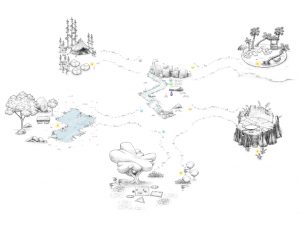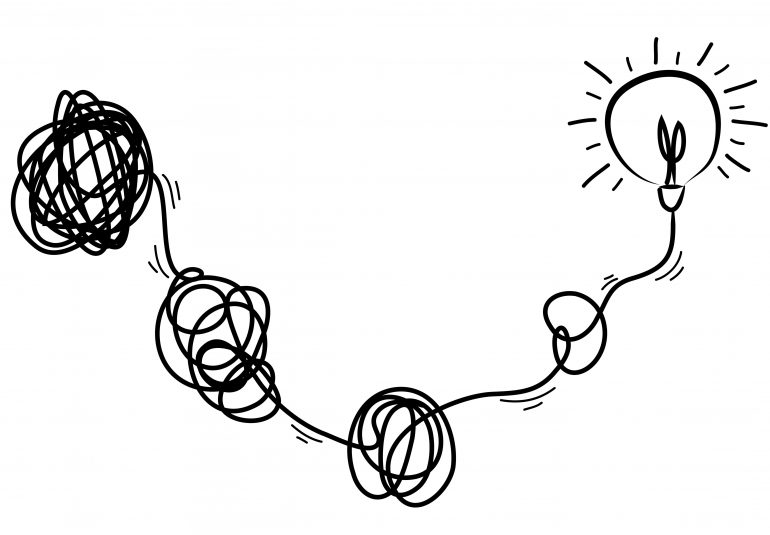It can be tempting to think that success looks like things working smoothly and going to plan. It can even be tempting to peg our sense of competence and effectiveness as teachers to these criteria. Yet every teacher has a story about things taking swerves, or plans going off the rails, resulting in unexpected learning opportunities which perhaps couldn’t have been designed.
It’s difficult to consider instances of plans going awry as ‘failures’, especially when the raw ingredients these situations provide can be usefully employed in the service of the learning experience. But the term makes a catchy headline, and
the idea of making friends with failing offers a way to welcome glitches, stumbles and detours as generative moments.
Here’s an account one of my own experiences of ‘making friends with failure’ in my online tutorials, and how it ultimately led to some meaningful, albeit unexpected, learning experiences for me and my students.
In semester 2, 2021, seeking a new space in which to host online tutorials which might facilitate more relaxed, equitable, and fun interaction than the somewhat stilted, invasive, and fatiguing environment Zoom can be, I began looking into online worlds. There are many of these. I posted on Yammer to ask if any colleagues had used any of them, and received an answer that a postgraduate unit of ~300 students had successfully run in Gather, and that the students had loved it. Encouraged, I played with Mozilla Hubs, Gather, iSee, and Topia, finally settling on Topia for its cute aesthetics, easy configurability, useful functionality, generous free version, and that it seemed to run smoothly, bandwidth-wise.
In my week 1 tutorial I floated the idea of using Topia, and participants were keen. So, using the library of assets in the platform, along with a few custom graphics I made and uploaded, I created a world and named it Scintillae – a simple outdoor landscape with a central campfire and five paths leading to five different spaces, one for each of the teams in my class. I tested the world with the help of a friend, trying a range of devices and operating systems and, confident that there were no technical impediments, I emailed my class the link and password and scheduled the week 3 tutorial in our new world.
It didn’t go smoothly.
While participants enjoyed exploring the landscape, using their avatars to walk, sit and dance, and chatting together in their team spaces, they were confused by the world’s spatial sound – users can only hear (and see, if they have their video on) other users who their avatars are in proximity to. While this feature is great for enabling the teams to have private conversations in their team area, participants found it confusing to hear me (on broadcast mode), but not be able to respond and be heard if they weren’t close (or hadn’t turned on broadcast mode for themselves). Also, I had Zoom running as a backup and it seemed to take over the mic from Topia, meaning some audio problems overall.
After the class, I sent an anonymous Qualtrics survey to ask the class if they’d like to continue in Topia. All responses were either yes or maybe, so we tried it again the next week, this time without concurrently running Zoom. Despite improvement in the audio, participants still struggled with the spatial sound, and in a post-session Menti poll voted overwhelmingly to return to Zoom.
Although my Topia idea didn’t work out in the way that I and the class had hoped when we discussed it in week 1, the experiment was a useful learning experience. The learning for me was to provide more information and preparation, as well as more time to acclimatise, when introducing a big change, and to remain flexible when plans go awry. The learning for the class was that they had choice and agency, and that their preferences and decisions mattered and could meaningfully influence the learning environment. One participant, in the critical reflection assignment at the end of semester, wrote that having such choice was rare in education, and was a demonstration that I genuinely cared about the class.
The learning which resulted from our Topia experiment was incidental and unexpected, yet even had there been no obvious positive outcomes,
the simple act of exploring something new together, and collectively deciding on the next step, is a worthwhile undertaking.

At Sydney, there’s freedom, expanded scope, and a safety net, which comes with having the support of formal institutional recognition that failure can be an essential part of innovation. Failures can position teachers as co-learners, and can be important way of modelling – and normalising – risk-taking, adaptability, and being human. Productive failure and Intelligent Fast Failure (IFF) are learning approaches that recognise the effectiveness of failure as a learning process, and failure is appreciated as a component of developing the resilience needed to engage in innovative practice.
Re-framing failure in teaching from something negative and to be avoided, to embracing it as a generatively unruly component of learning, is a way to be kind to ourselves and our classes, and to chart new territory – unhitched from expectations of always getting things ‘right’, we are free to experiment, stumble, enjoy, and learn from the unexpected.
Jungic, V., Creelman, D., Bigelow, A., Côté, E., Harris, S., Joordens, S., Ostafichuk, P., Riddell, J., Toulouse, P., & Yoon, J.-S. (2020). Experiencing failure in the classroom and across the university. The International Journal for Academic Development, 25(1), 31–42. https://doi.org/10.1080/1360144X.2020.1712209
Kresta, S. M. (2021). Teaching innovation in an age of disruption. Canadian Journal of Chemical Engineering, 99(10), 2138–2148. https://doi.org/10.1002/cjce.24133
Steenhof, N., Woods, N. N., & Mylopoulos, M. (2020). Exploring why we learn from productive failure: insights from the cognitive and learning sciences. Advances in Health Sciences Education : Theory and Practice, 25(5), 1099–1106. https://doi.org/10.1007/s10459-020-10013-y
Tahirsylaj, A. S. (2012). Stimulating creativity and innovation through Intelligent Fast Failure. Thinking Skills and Creativity, 7(3), 265–270. https://doi.org/10.1016/j.tsc.2012.05.005





